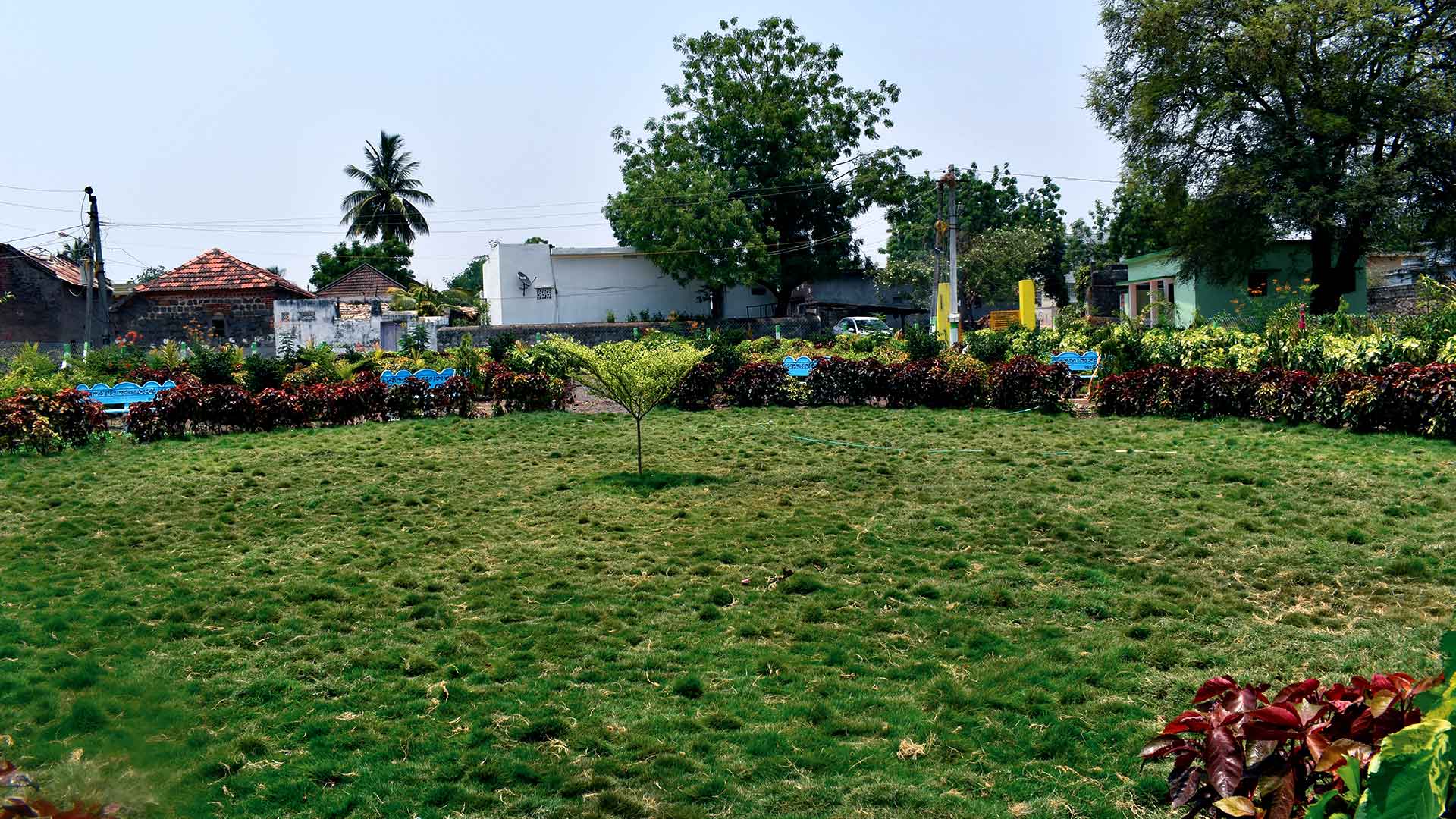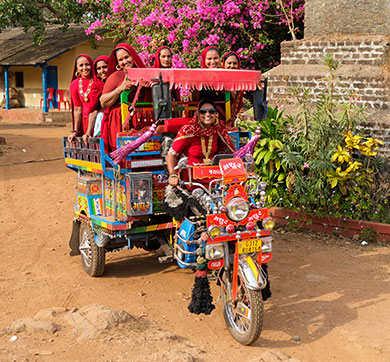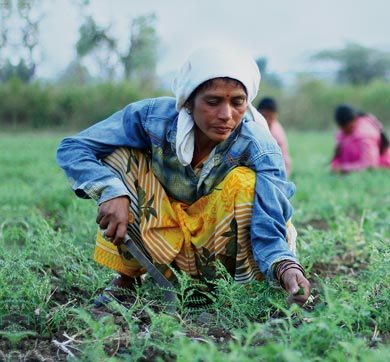June 2020 | 1261 words | 5-minute read
It’s peak summer and the mercury is touching 45°C in Nandigama, but the heat is no deterrent for Suma Malini. A government development officer for whom this town in the Krishna district of Andhra Pradesh is another stop on a 23-village watch, Ms Malini is braving the elements to check the progress made by a community-based programme.
The ‘village development plan’ (VDP), as the programme is called, aims to improve a total of 265 villages in the state. Multi-themed in nature and extensive in scope, the programme covers water, environment, health and other issues, the idea being to turn these villages into model villages.
Based on the Indian government’s model village initiative, the Sansad Adarsh Gram Yojna, the programme was launched in september 2015 by the Andhra Pradesh state administration in partnership with the Tata Trusts. The overarching objective is to improve the quality of life of more than a million people spread across Vijayawada rural parliamentary constituency.
Proper sanitation and waste management facilities, tanks and pipes for drinking water, a drive to improve the green cover, awareness camps and more, VDP takes in a lot. What makes the programme different is its collaborative focus on micro-planning for village development, bringing together multiple state ministries, district-level authorities, gram panchayats (village councils) and NGOs, all pulling together for grassroots development.
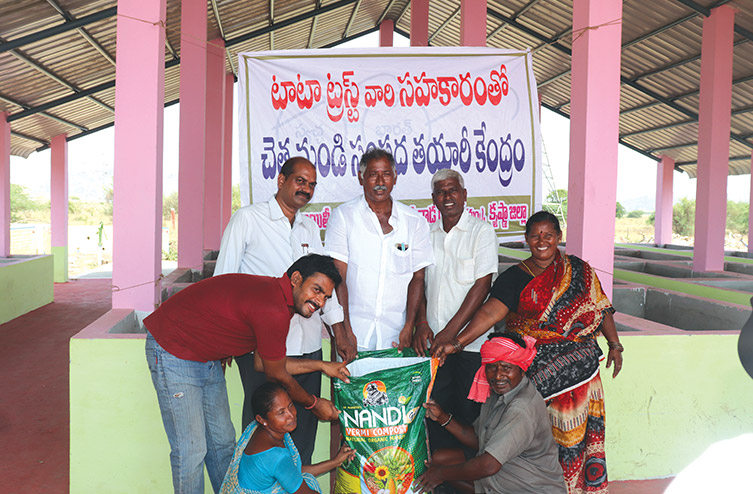
The VDP project started with a baseline study to determine what village communities need most of all. The requirement for toilets stood out, with nearly 90,000 households in the target area lacking proper sanitation facilities. The Trusts were asked to supervise the toilet construction component and the Trusts and its associate organisations were involved in the task, which got a further boost with the central government’s ambitious Swachh Bharat Mission (clean India) initiative.
It soon became clear that many households could not afford the cost of constructing a toilet. Though the state government reimburses the amount invested by households in toilet building, payments were taking time to reach the accounts of villagers. A solution had to be found urgently.
The Tata Trusts created a revolving fund through which the NGOs in the project paid the contractors on behalf of the villagers. This money is later reimbursed to the NGOs. Over the past 15 months, more than 20,000 toilets have been built under VDP.
Sanitation shining
The Tata Trusts team interacted with different suppliers and vendors and standardised the quality of toilet construction. They ensured that costs were minimised and toilets, with necessary amenities in place, were built for less than ![]() 15,000 each. There were doubts to be dispelled, though, before such construction could commence.
15,000 each. There were doubts to be dispelled, though, before such construction could commence.
Traditional beliefs meant that the villagers were initially reluctant to have the toilets attached to their homes. To counter the taboo the Tata Trusts organised volunteers to convince women — the biggest beneficiaries here — that toilets at home meant cleanliness and safety. This was part of a communication strategy that has worked well enough to ensure that all 265 villages in the project are now free of open defecation.
Toilets are one part of what has become a sanitation mission. The Trusts have provided technical and infrastructural support to help the villagers with solid and liquid waste management. There are 260 three-wheelers and 40 battery-operated vehicles to collect dry waste. To improve liquid waste management in the region, the Trusts have piloted the construction of soak pits in five villages.
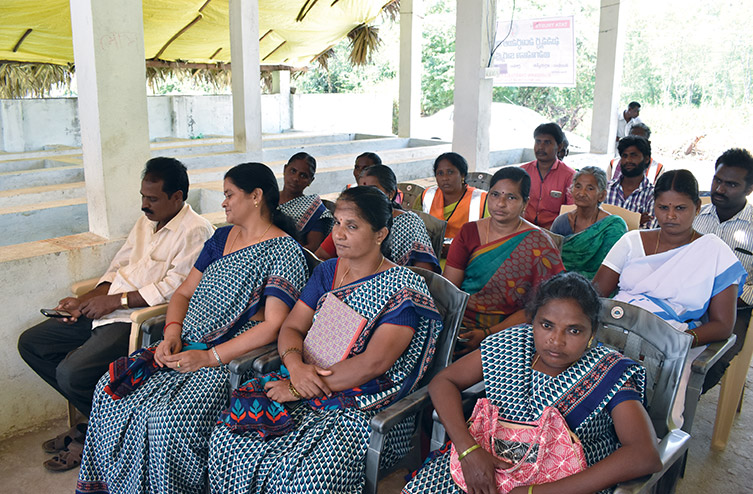
Lack of safe drinking water was another problem, with some 80 of the villages suffering seriously as a consequence. This has been tackled by constructing more than 115 storage tanks and installing 35,000 metres of water pipelines in the villages.
Reviving landscapes left barren by rampant tree-cutting for fuel is another exemplary aspect of the VDP initiative. The Trusts, in partnership with NGOs, are working to encourage villagers to plant trees and improve the green cover. To improve the survival rate of the plants, the Trusts have supplied nearly 50,000 tree guards to the villages.
The embrace of VDP by the community as a whole has seen villagers raising funds for the programme from different donors and people’s representatives. “We have made VDP a non-political effort that is acceptable to all parties,” says Rajendra Babu, the Tata Trusts’ regional manager for Andhra Pradesh. “It took us some time to do this but we’ve succeeded.”
The setting aside of space for parks and burial grounds is among the unusual features of the programme. Also on the menu are telemedicine centres to monitor and treat noncommunicable diseases, villagers being made aware of health insurance and insurance companies being pushed to set up branches in the region.
Spark for a park
Working in favour of the ‘village development plan’ (VDP) is the fact that the community has stepped up to make the most of the programme. David Raju, a resident of Pathanaguluru village and a member of its development committee, is an example.
Mr Raju was part of a group of villagers taken on a Tata Trusts-arranged visit to Burugupudi, a model village about 150km away. “It was an eye-opener for us,” he says. “We realised that we could also work on developing our village in a time-bound and planned manner.”
Pathanaguluru, about 40km from Vijayawada, is one of the 265 villages where VDP is being implemented. About 1,500 people live here and, besides everything else, the villagers wanted a park where their children could play and their elderly could get some fresh air.
Working in coordination with the Trusts, Mr Raju got the park developed quickly. “The Trusts gave us the plants and the mesh and poles for the tree guards,” he says. The new park has inspired the locals to plan for more improvements. “We now want to build a library in the park and the Trusts have promised to provide support.”
This is not how it used to be for Pathanaguluru and its denizens. “In the past, things used to move at a snail’s pace,” says Mr Raju. “But after the setting up of the village committee, issues are taken up quickly and the government departments also respond promptly.”
Change that lasts
The difference VDP has made to the everyday life of the community is clearly visible, says Mr Ramesh Babu who has been managing on behalf of the Trusts. “There are about 1.1 million people in these villages and their expectations have shot up since the programme’s launch,” he says. “The greatest enthusiasm for it is among women and youth.”
Technology has been among the most effective instruments in driving the project forward. The Trusts and their partner NGOs, village representatives, government administrators and legislators are all connected to one another and every village development committee is in WhatsApp and other social media groups that includes senior government officials.
The need to make the initiative self-sustaining has seen the Trusts segue towards capability building. “The next two years will see growing responsibility transferring to the village groups,” says Mr Babu. “The Trusts are there to lend support, but we want them to operate independent of us.”
The exertions of the Trusts to cement and push forward the VDP agenda have been appreciated. “I’m happy to say that the Tata Trusts team that works with us truly has the pulse of the village folk,” says Ms Malini. Better still, the Trusts have shown that this community-centric approach to village improvement can be replicated almost anywhere in India.
—Nithin Rao
Source: Tata Trusts' Horizons, September 2019 issue




